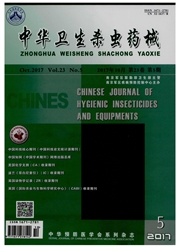

 中文摘要:
中文摘要:
依据白蚁分布及危害情况,合理评定白蚁危害地区,不仅能够为我国新建房屋白蚁预防工作的有效开展提供科学决策依据,而且对于加强园林、水利和古建筑等白蚁危害重要对象的蚁情调查监测和整体防控具有积极意义。本文结合国家标准《白蚁危害评定标准》的编制及相关研究工作,对白蚁危害地区的评定范围、工作程序、蚁情调查的内容、现场调查的方法和危害地区评定标准进行分析。研究认为,白蚁危害地区的评定宜在县、市、省三级行政区域内开展;应合理确定不同行政区域内蚁情调查的内容和方法;评审机构应全面掌握评定区域内房屋建筑、园林植被、水利工程白蚁危害现状,充分考虑地理情况、白蚁种类和危害历史等综合性因素,确保不同行政区域内白蚁危害地区评定结果的科学合理性。
 英文摘要:
英文摘要:
In terms of the distribution and damaging condition of termites,the scientific evaluation of termite damaging districts would not only provide the decision basis for administrations to carry out the termite prevention work in newly built buildings,but also enhance the monitor and general prevention and control abilities of termite damage to landscape plants,water conservancy projects and historic buildings.Based on the compilation of the national standard "Standard for termite damage evaluation"and the relevant research work,this article explored the range and procedure of evaluation of termite damaging districts,the object and sample size of investigation of termite damage in different administrative districts,the content and method of investigation on the termite damaging condition,and the criteria of evaluation of termite damaging districts. In this article,the evaluation of termite damaging district was suggested to be conducted in the range of county,municipality and province,respectively. The investigated objects of termite damage from different administrative districts and their sample sizes should be determined rationally. The accrediting agencies should fully master the current situation of termite damage to local buildings,landscape plants and water conservancy projects from different administrative districts,and fully take the geographical condition,the termite species,the historic termite damage records and other factors into consideration,thus ensuring the scientific rationality of evaluation of termite damaging districts in different administrative districts.
 同期刊论文项目
同期刊论文项目
 同项目期刊论文
同项目期刊论文
 期刊信息
期刊信息
